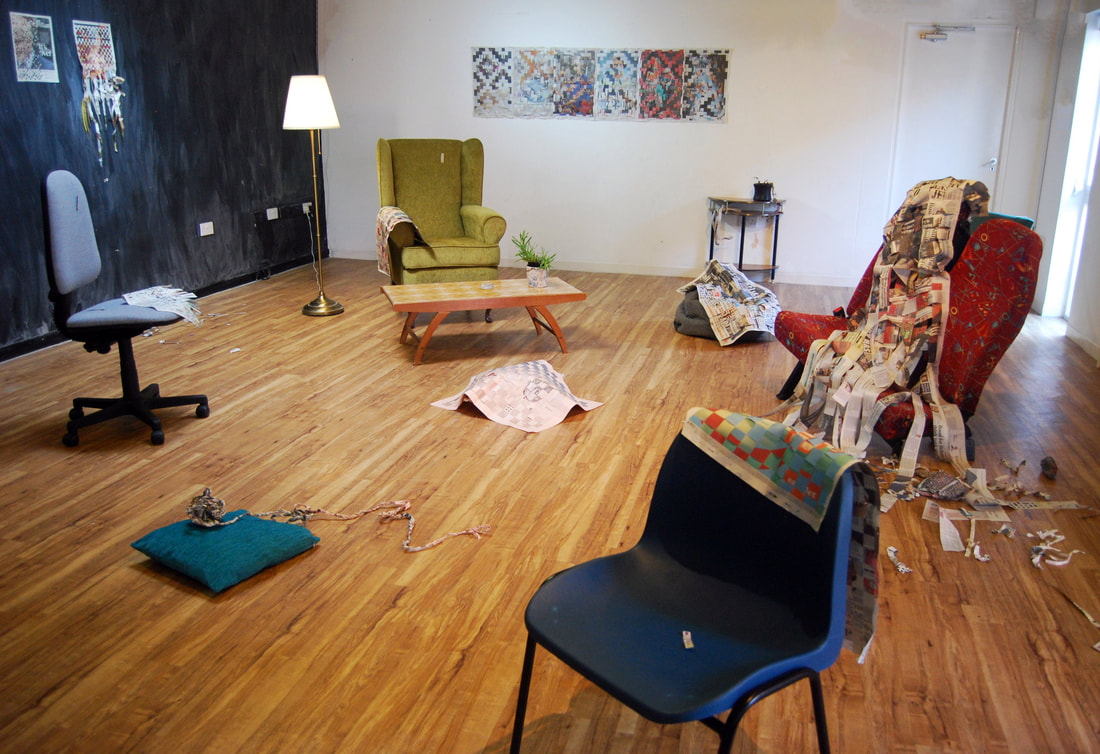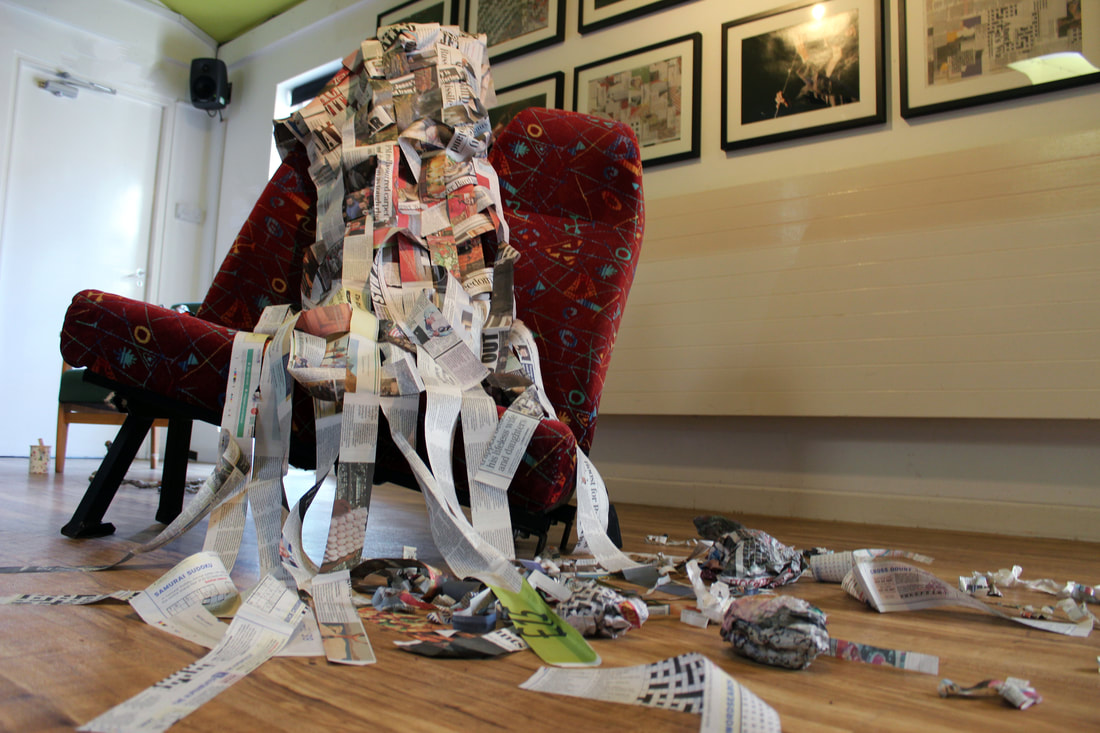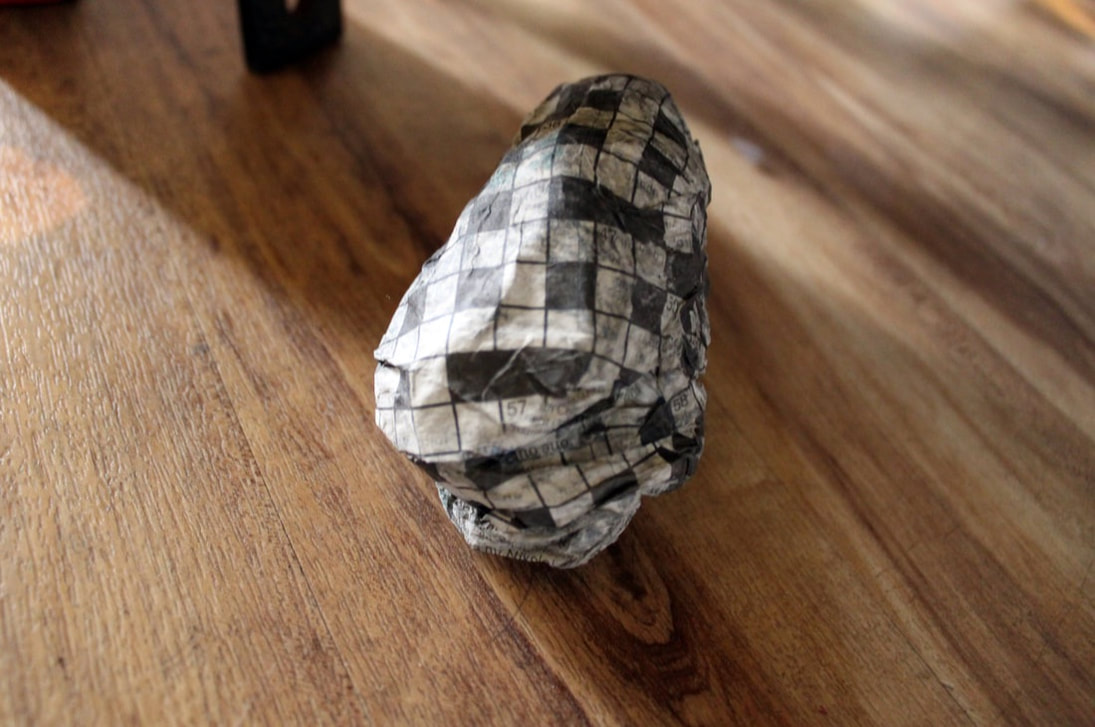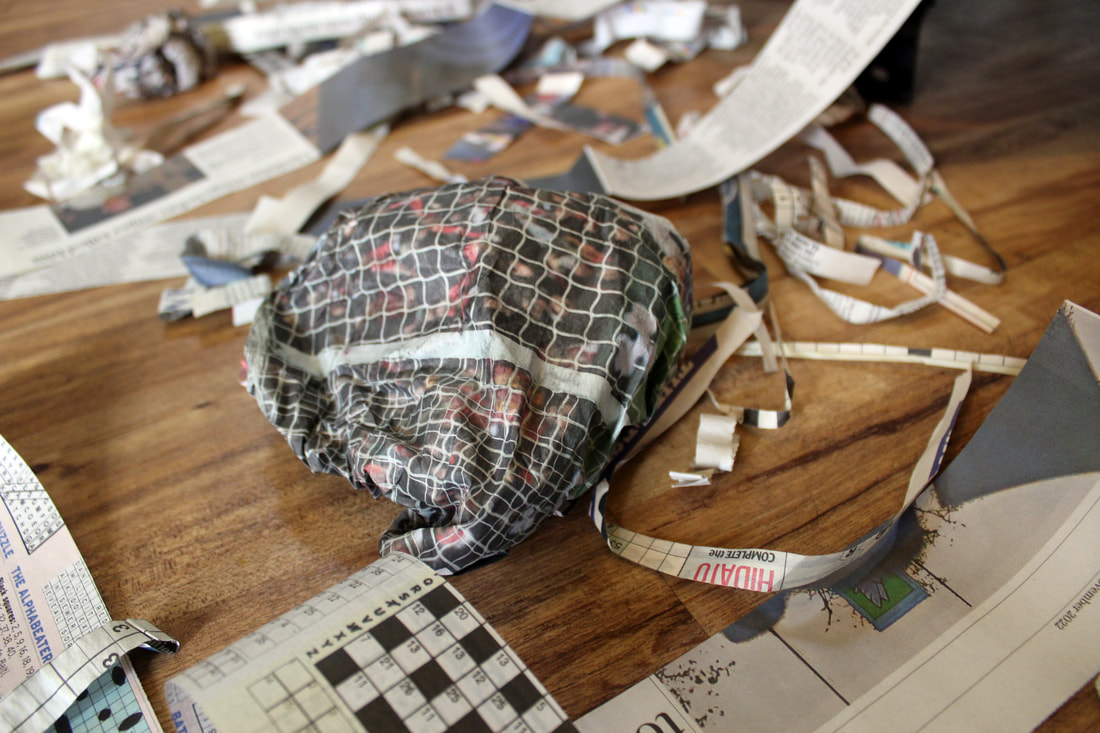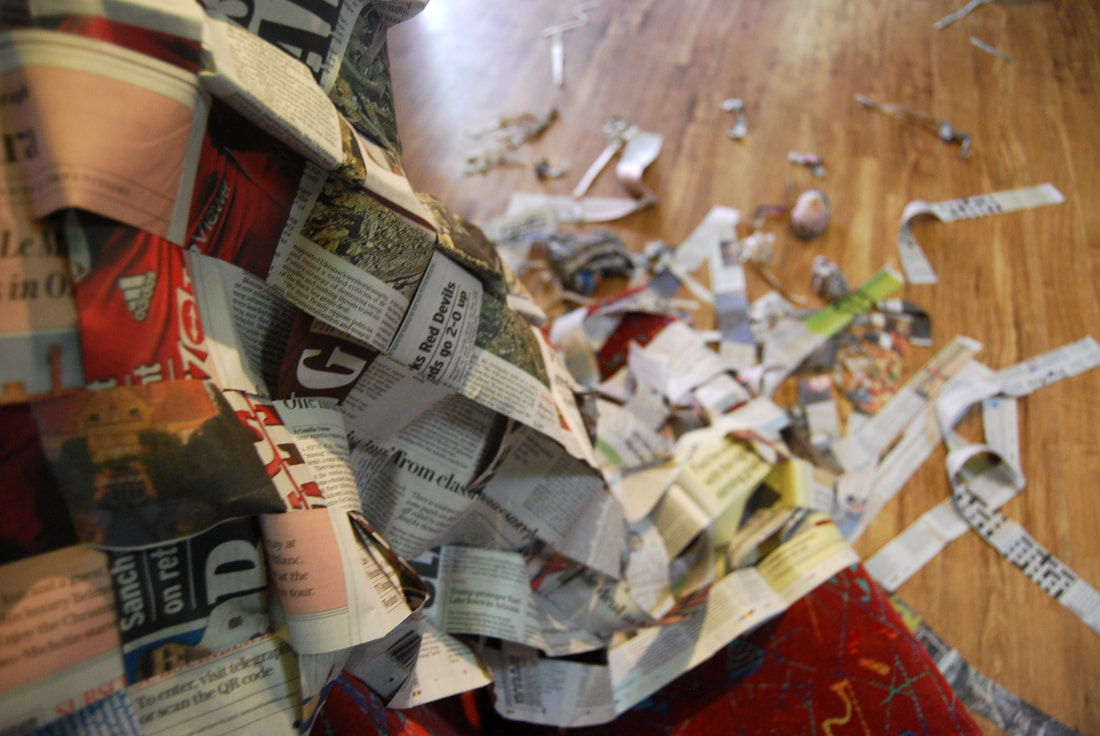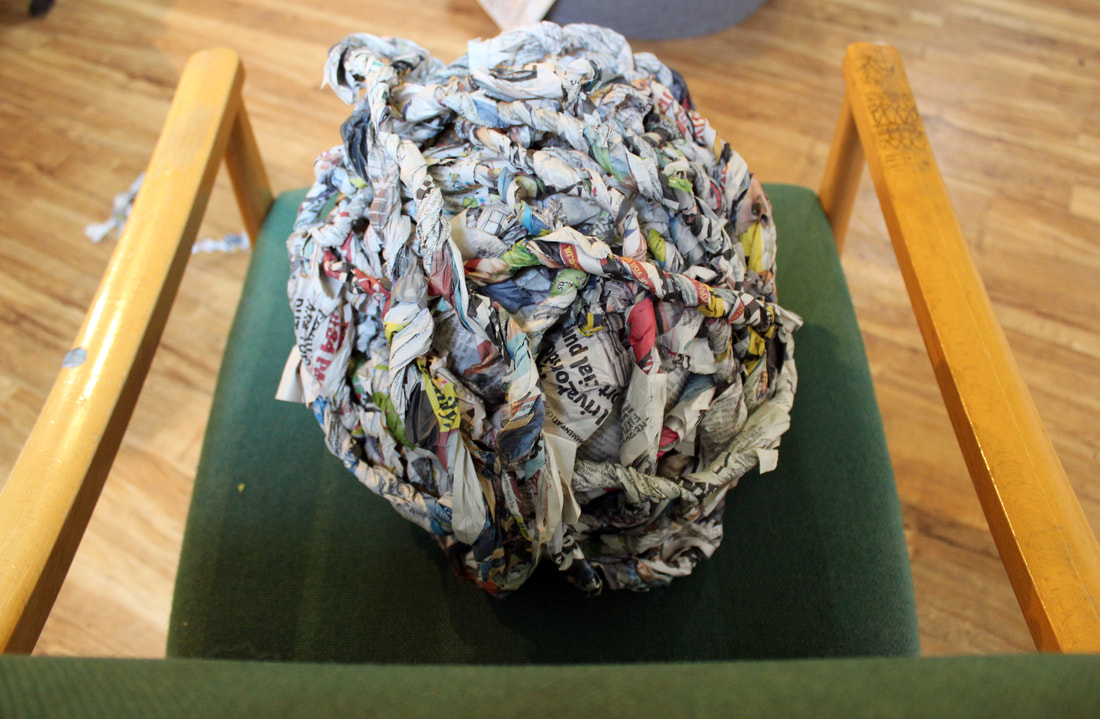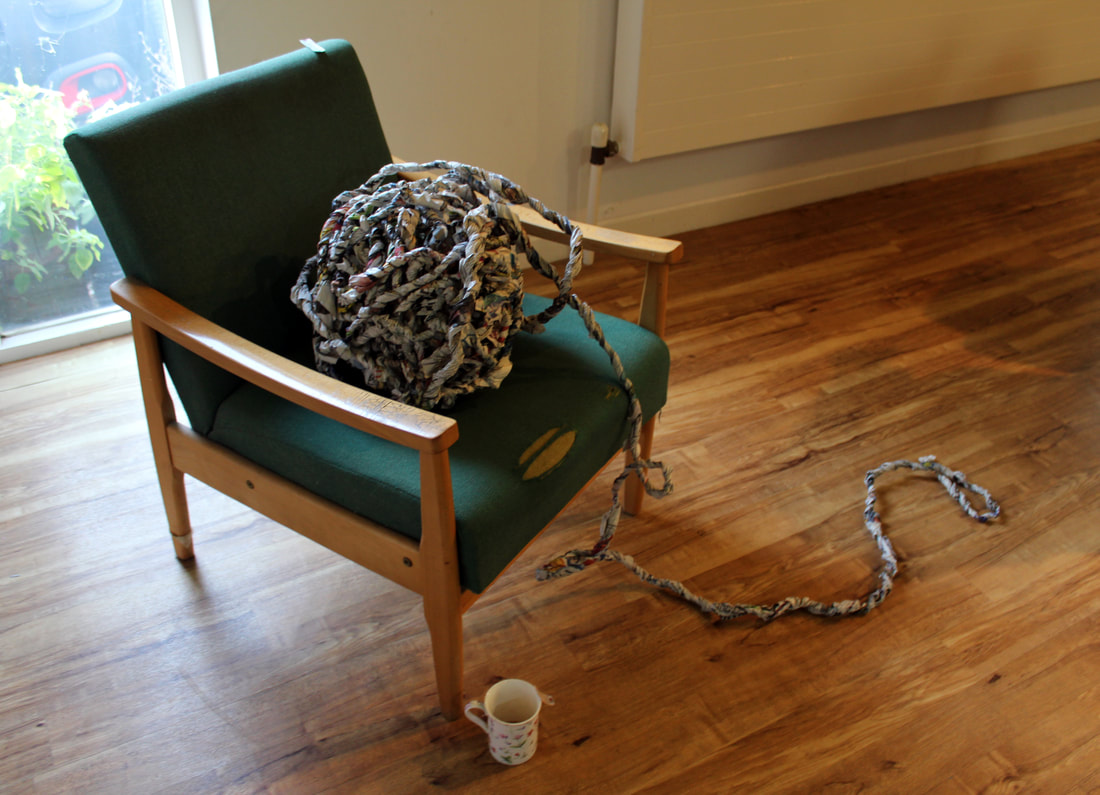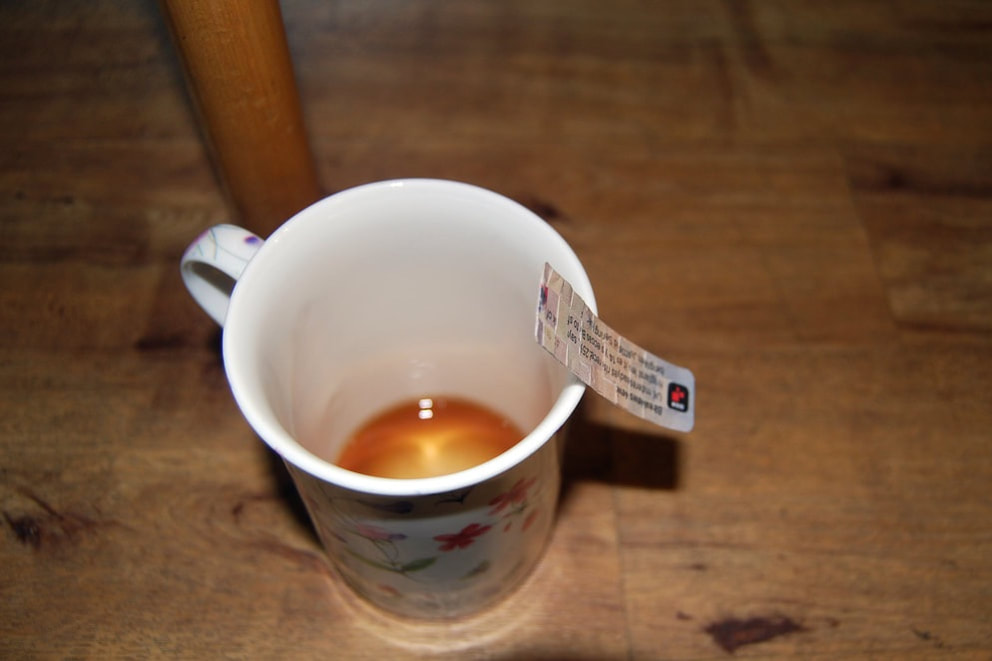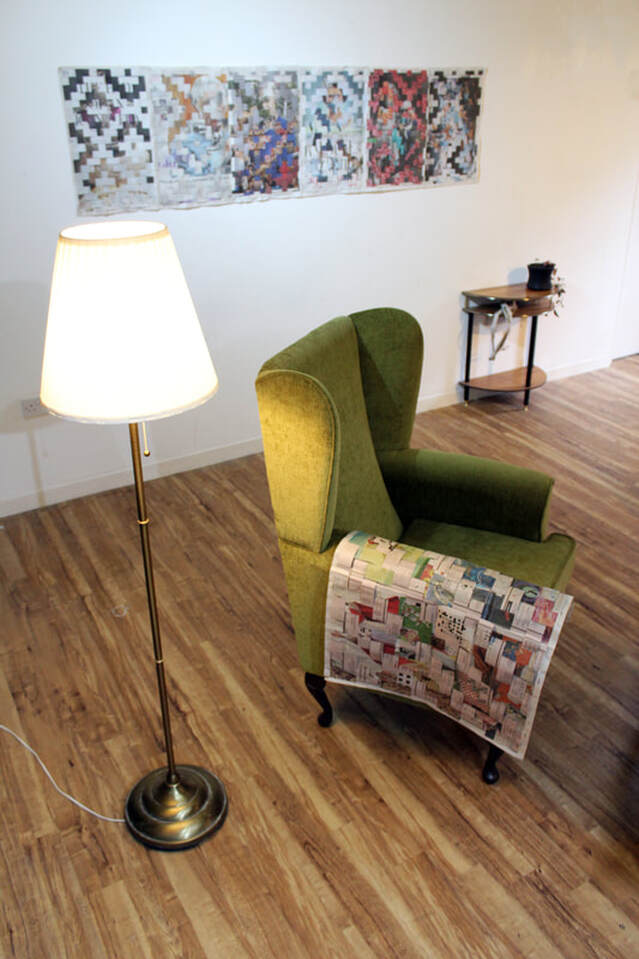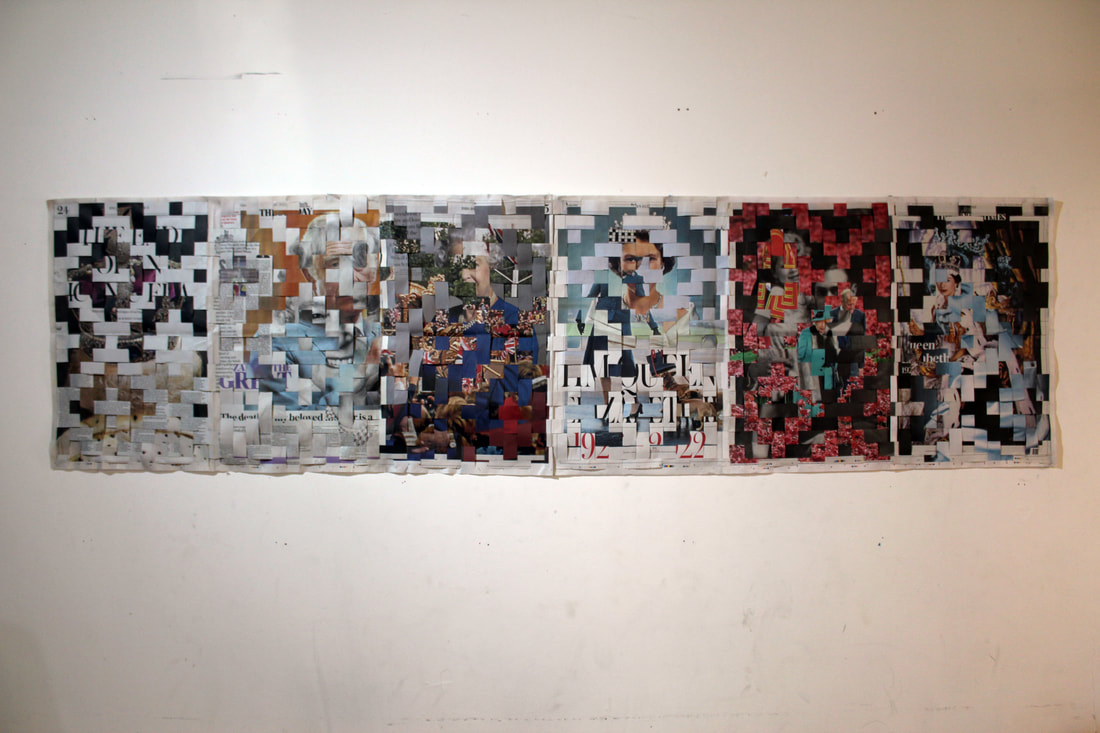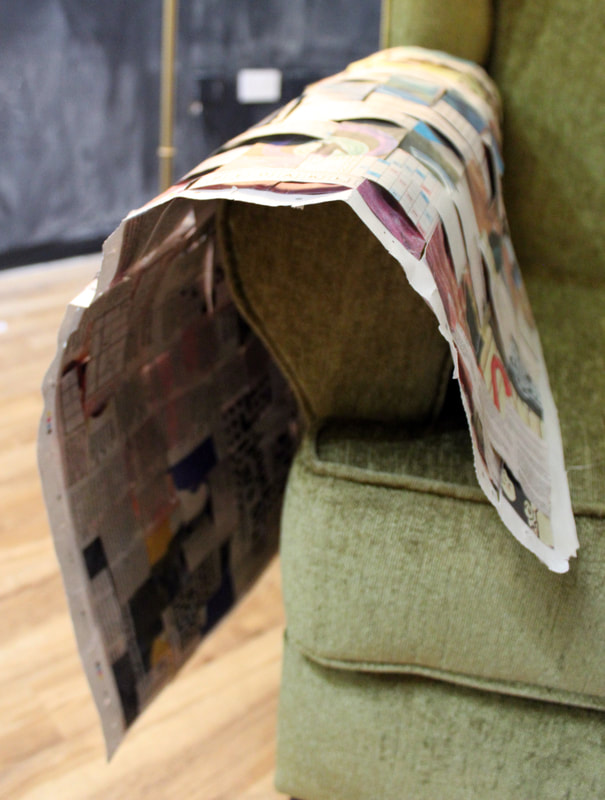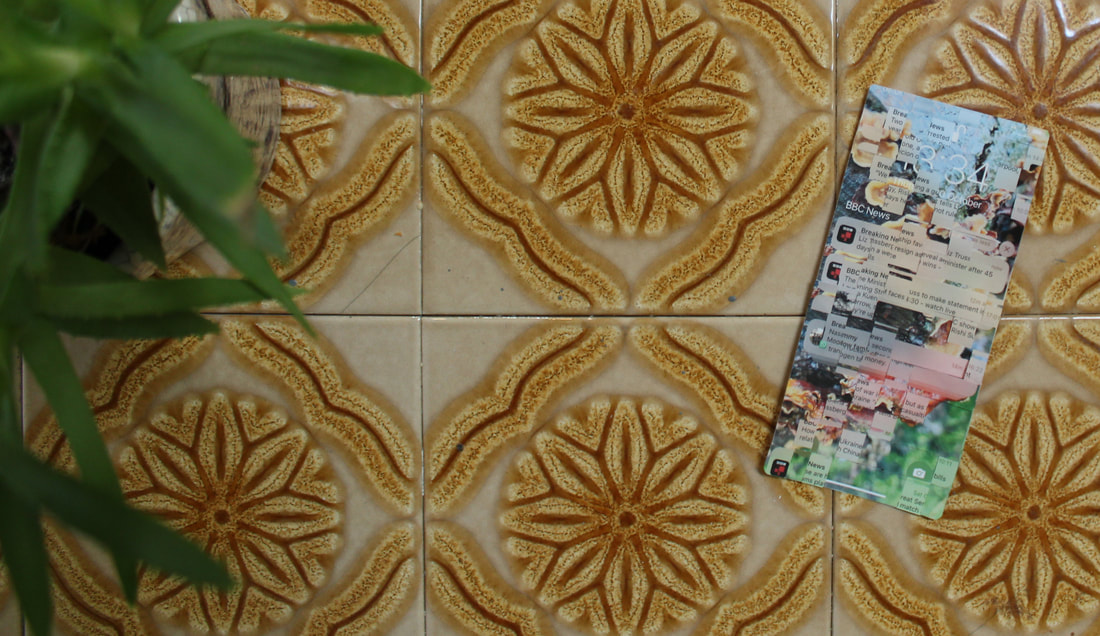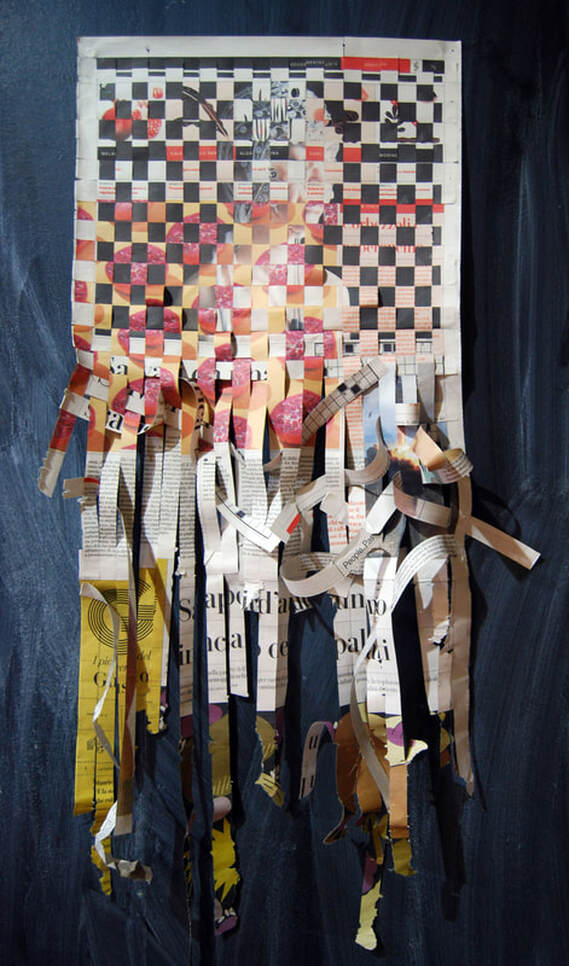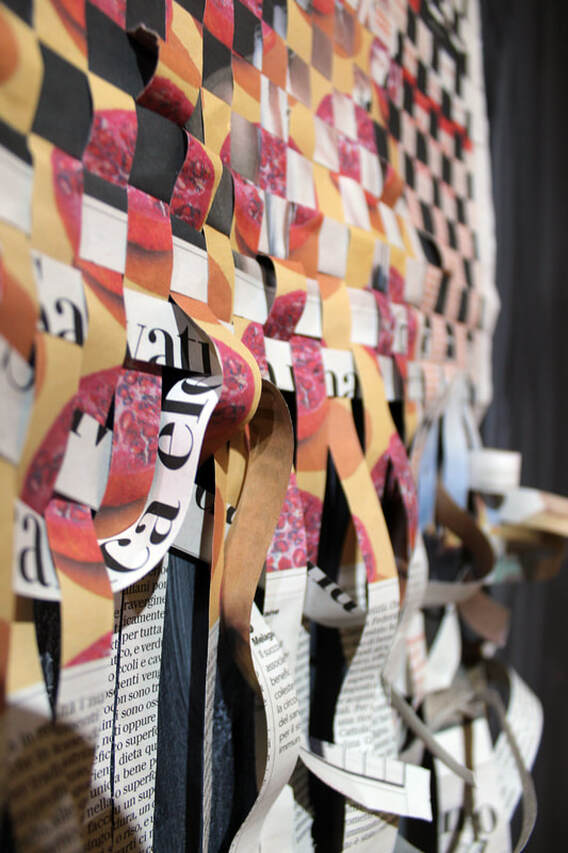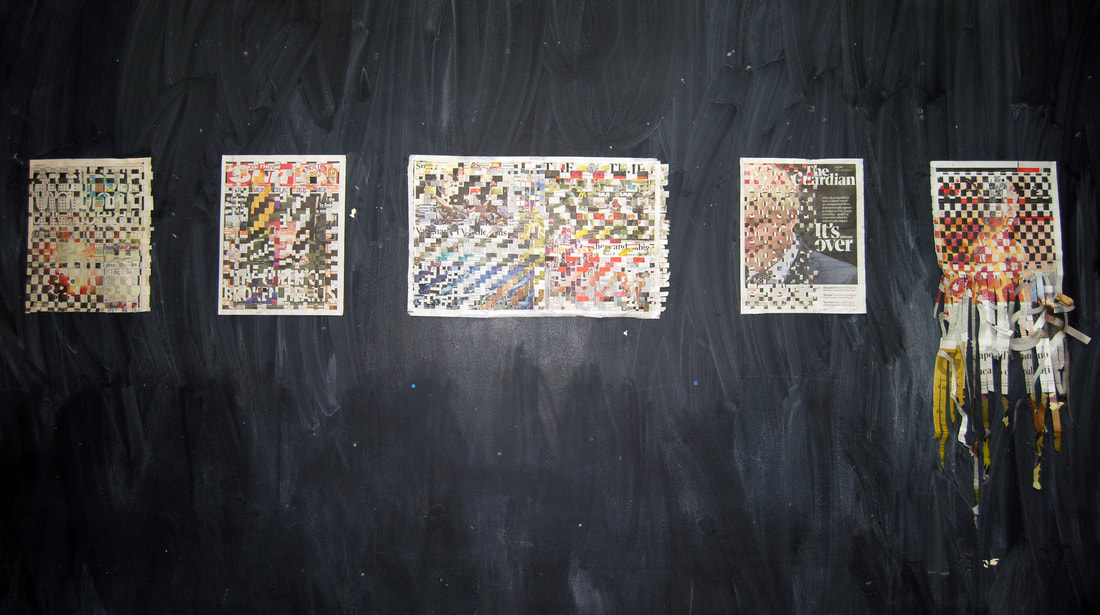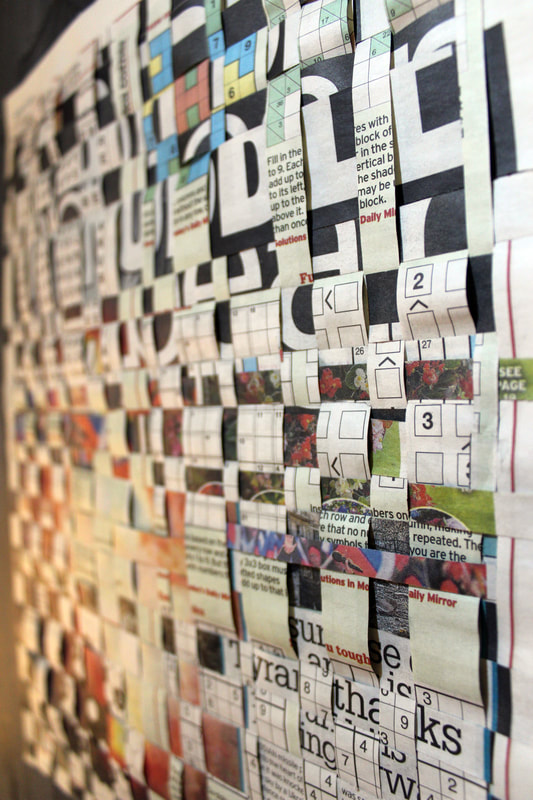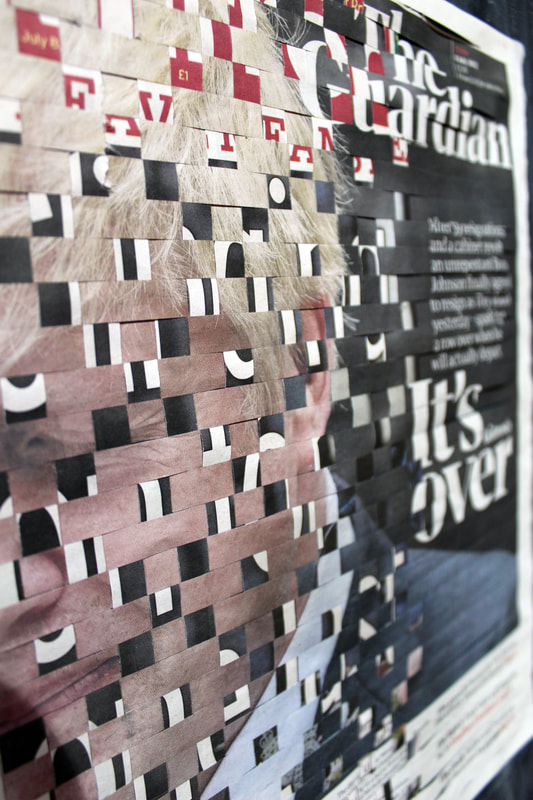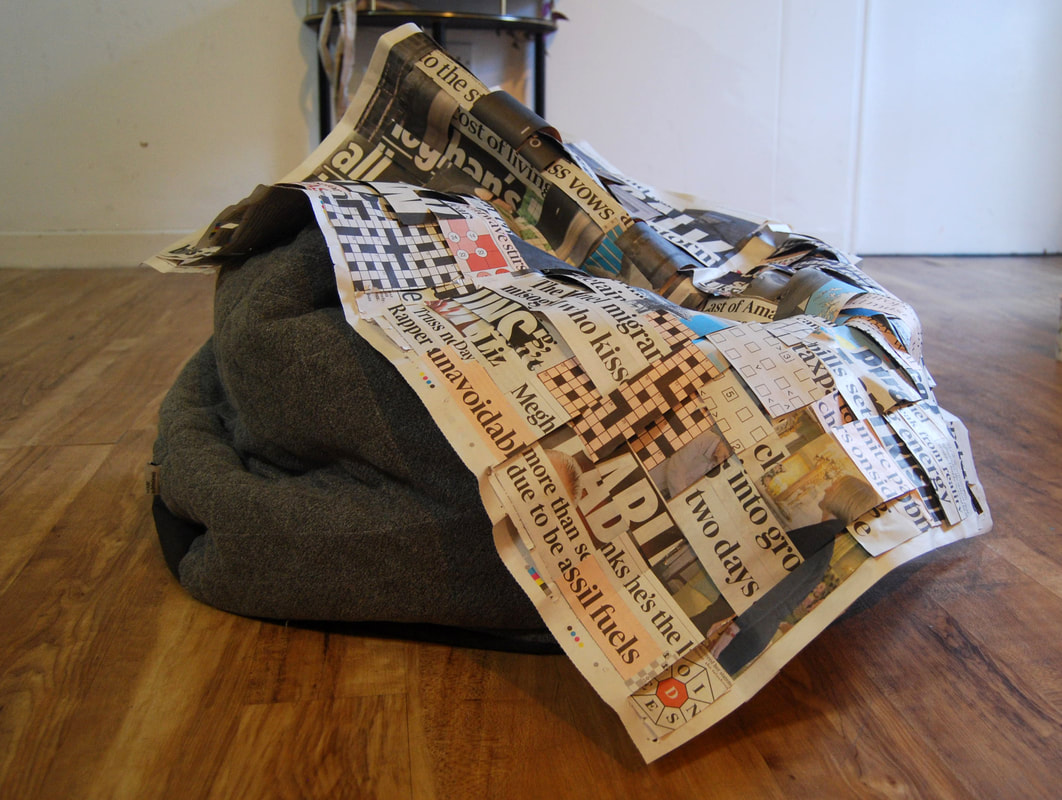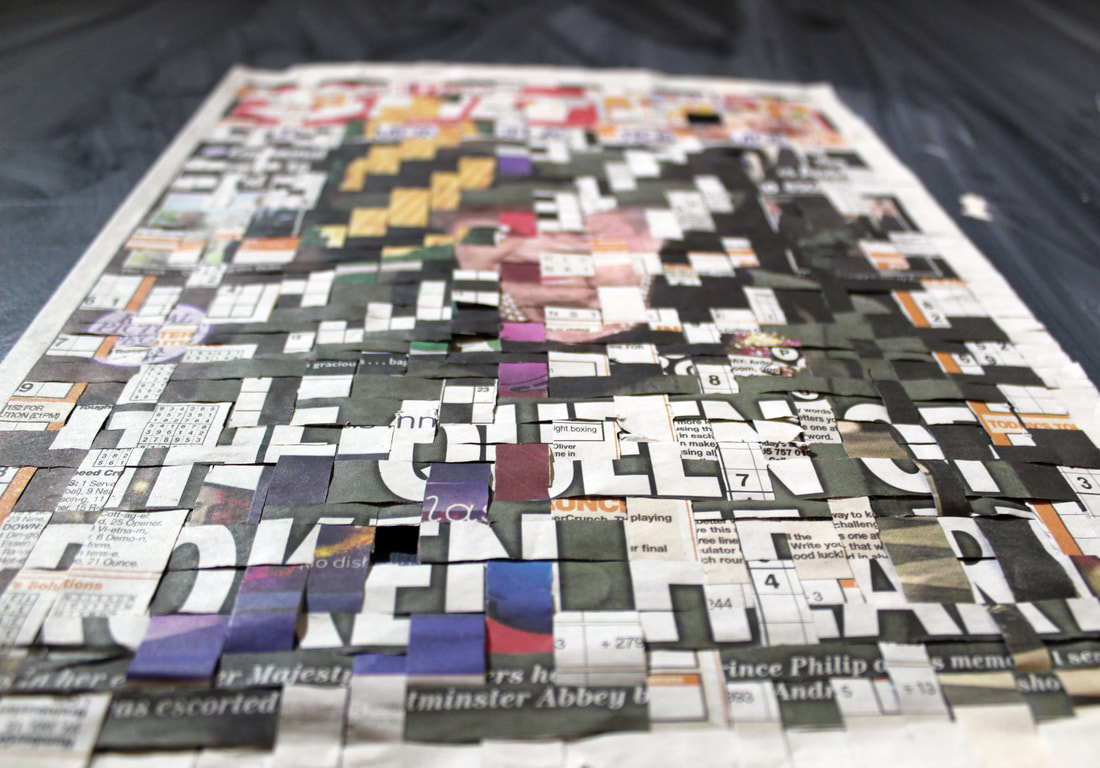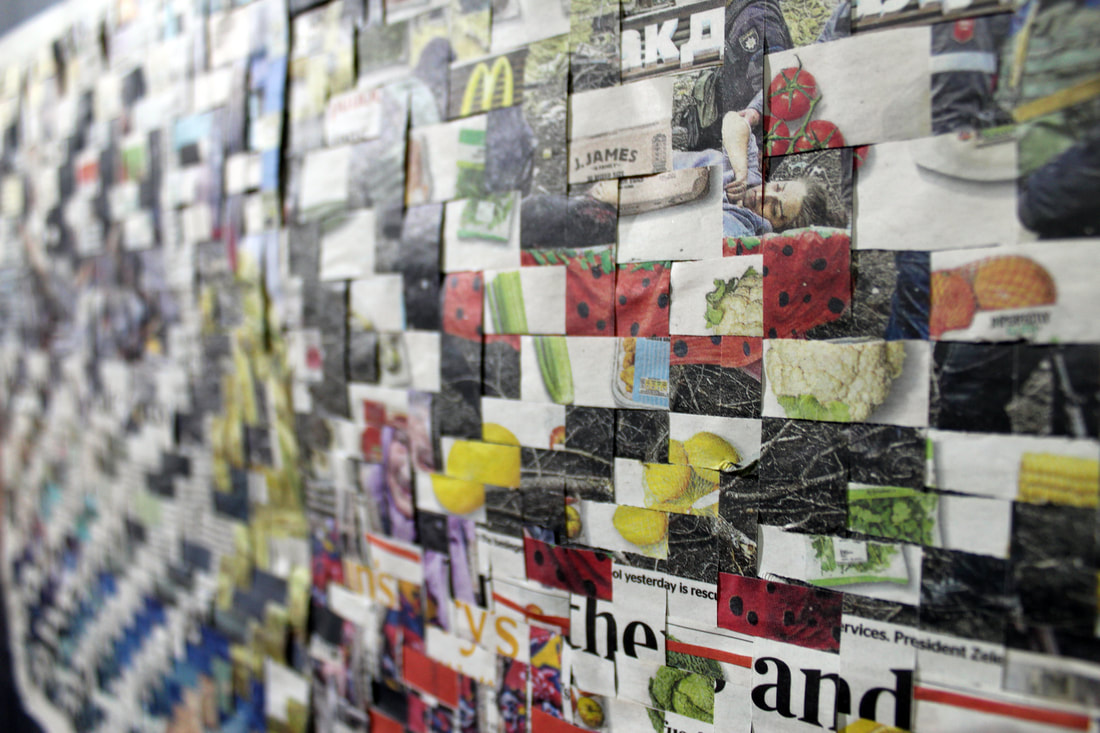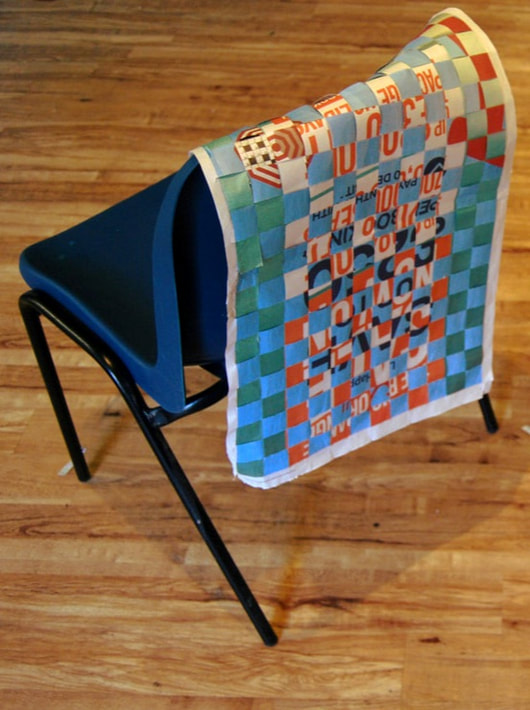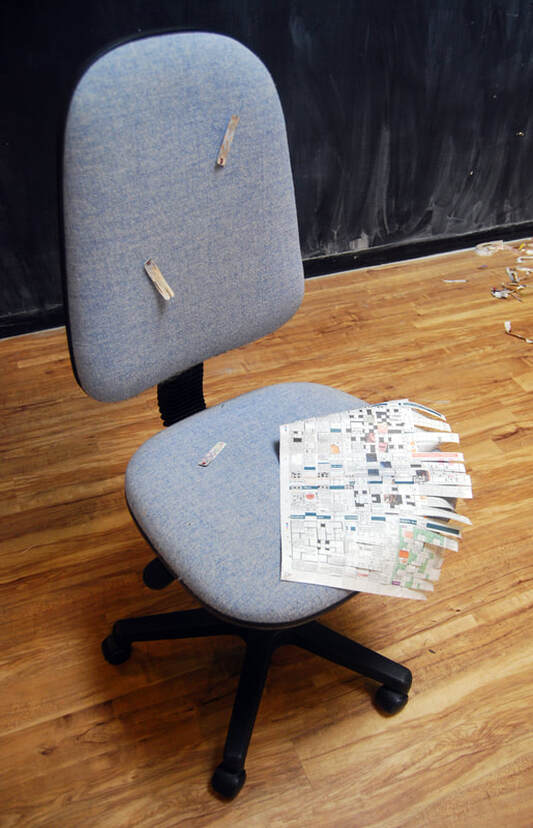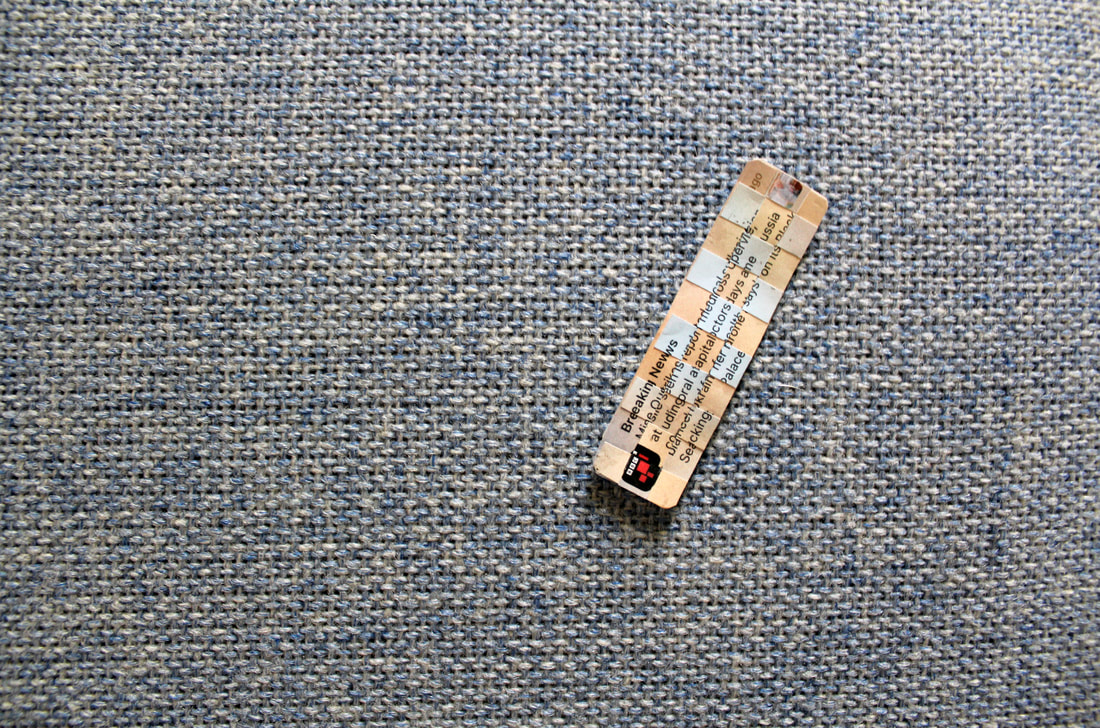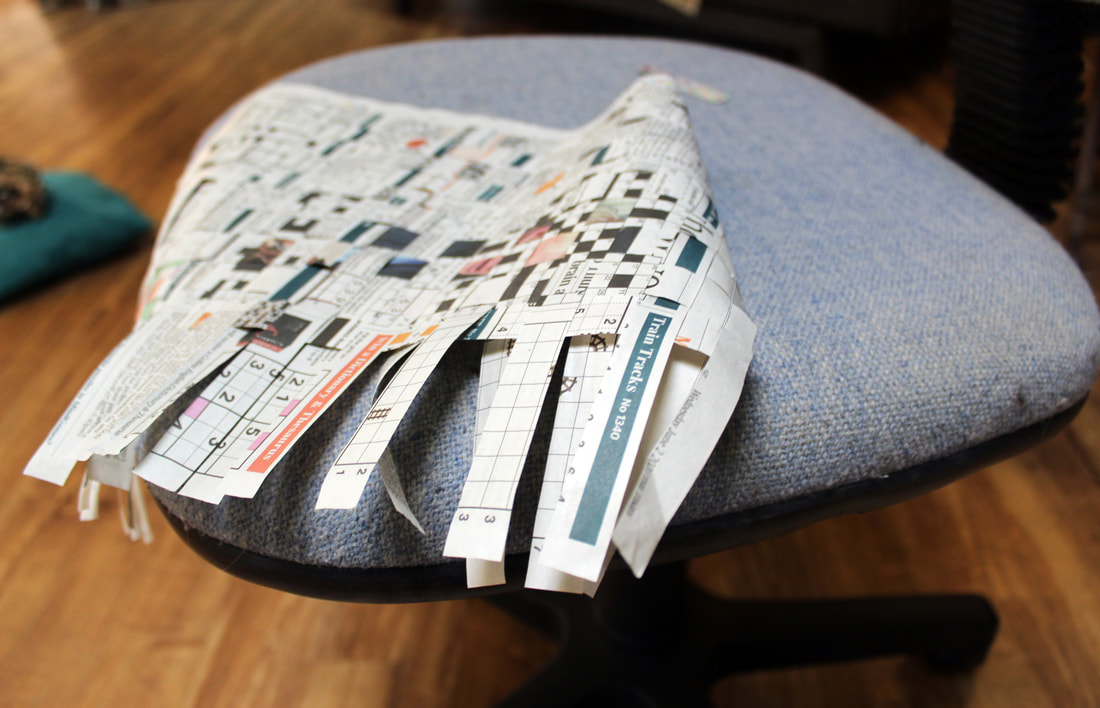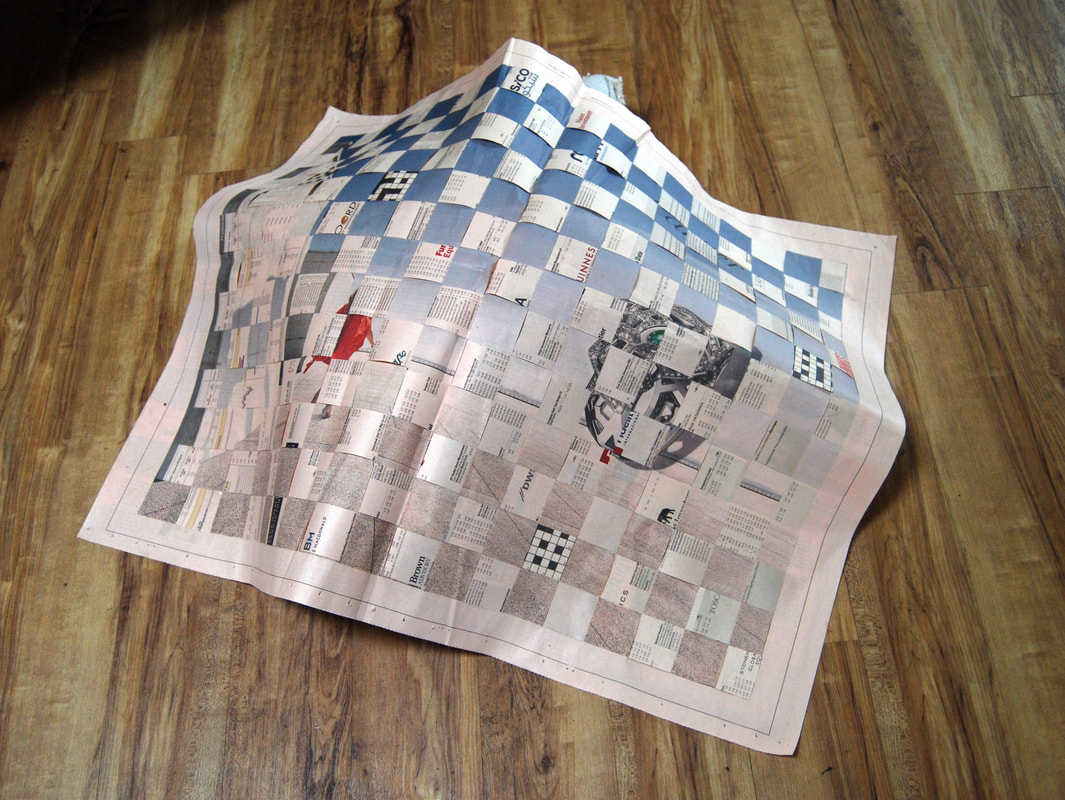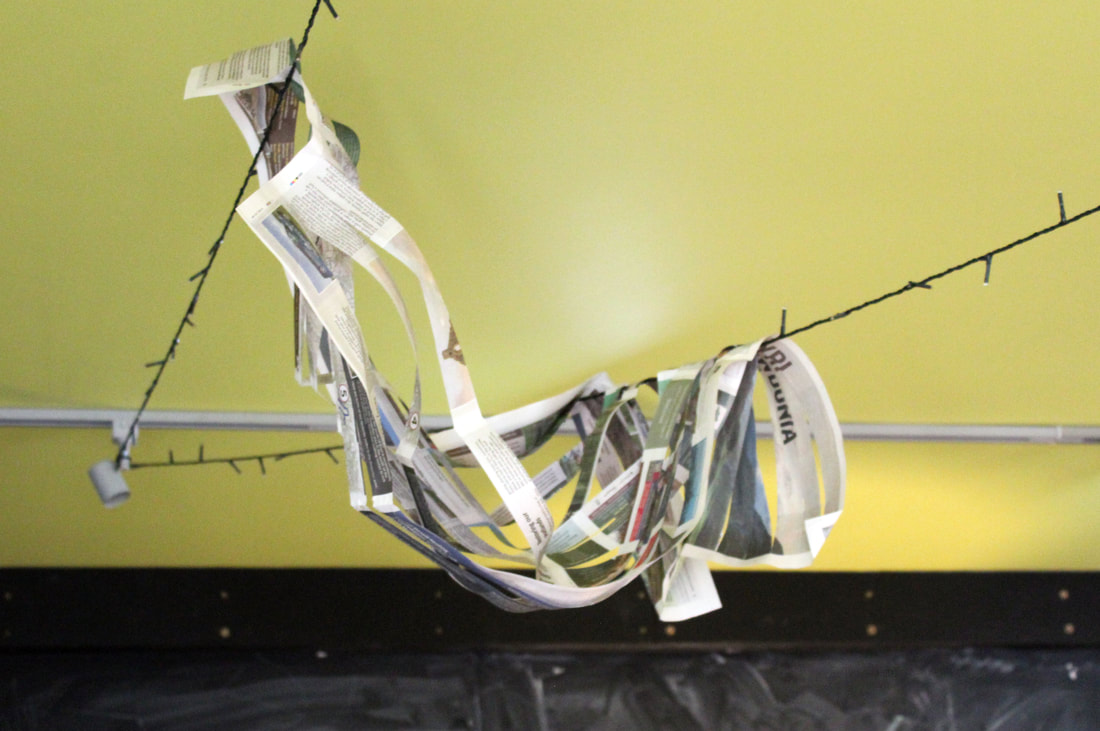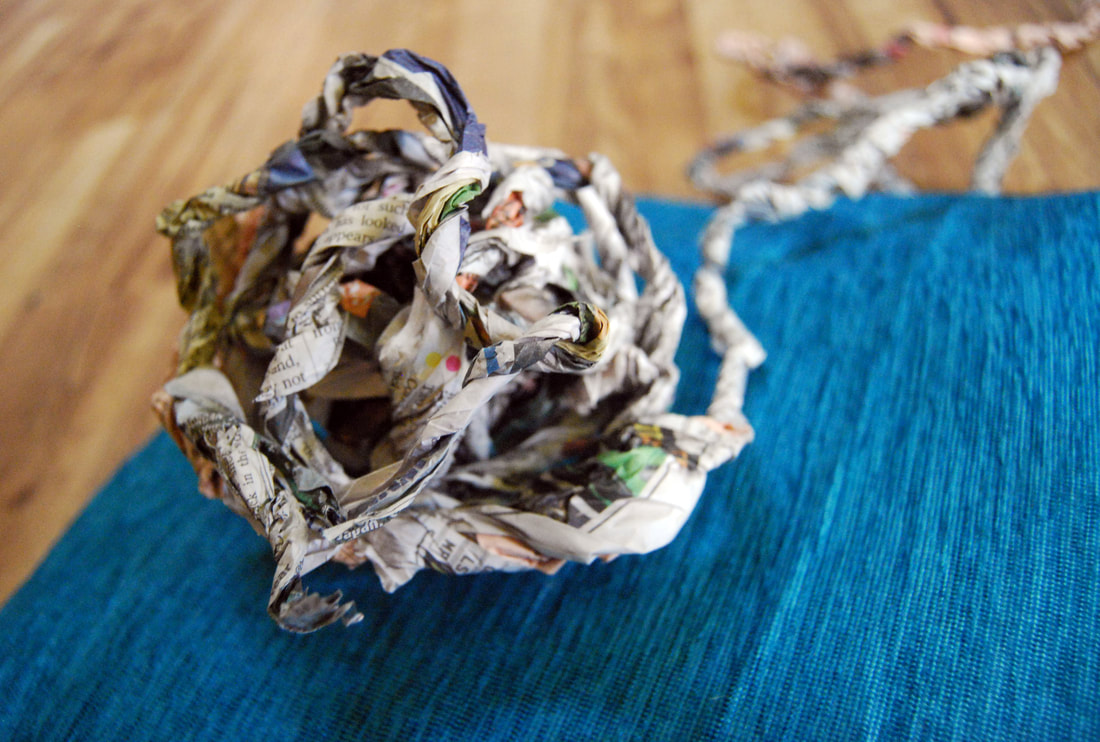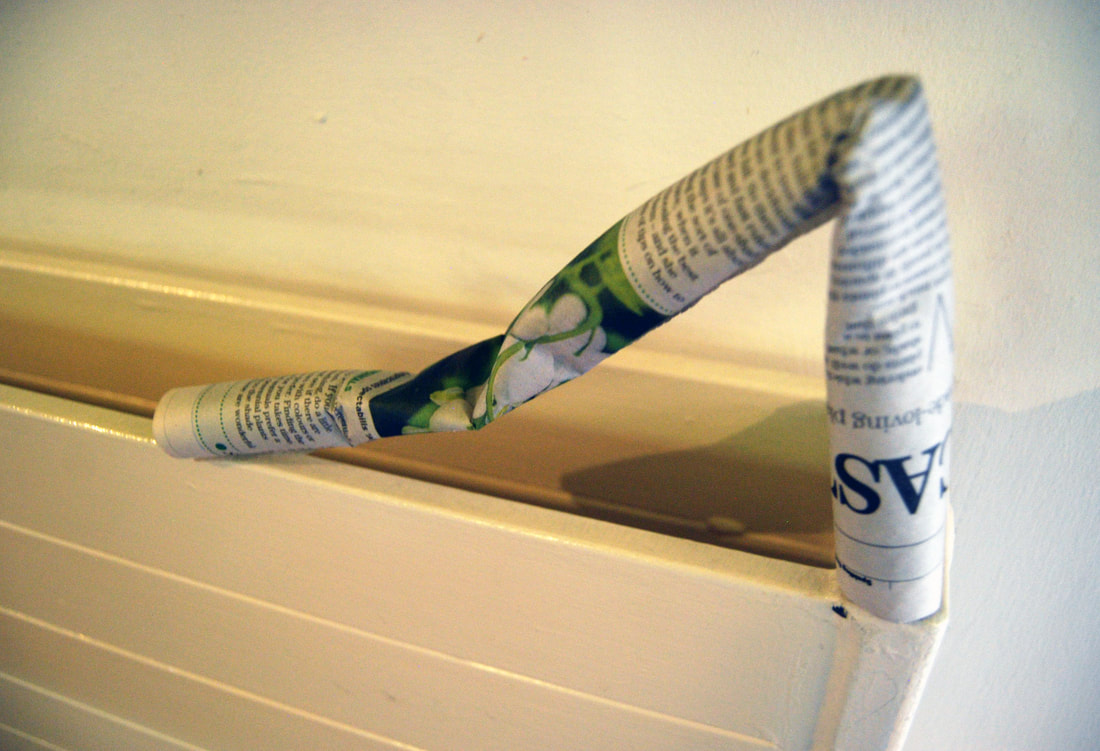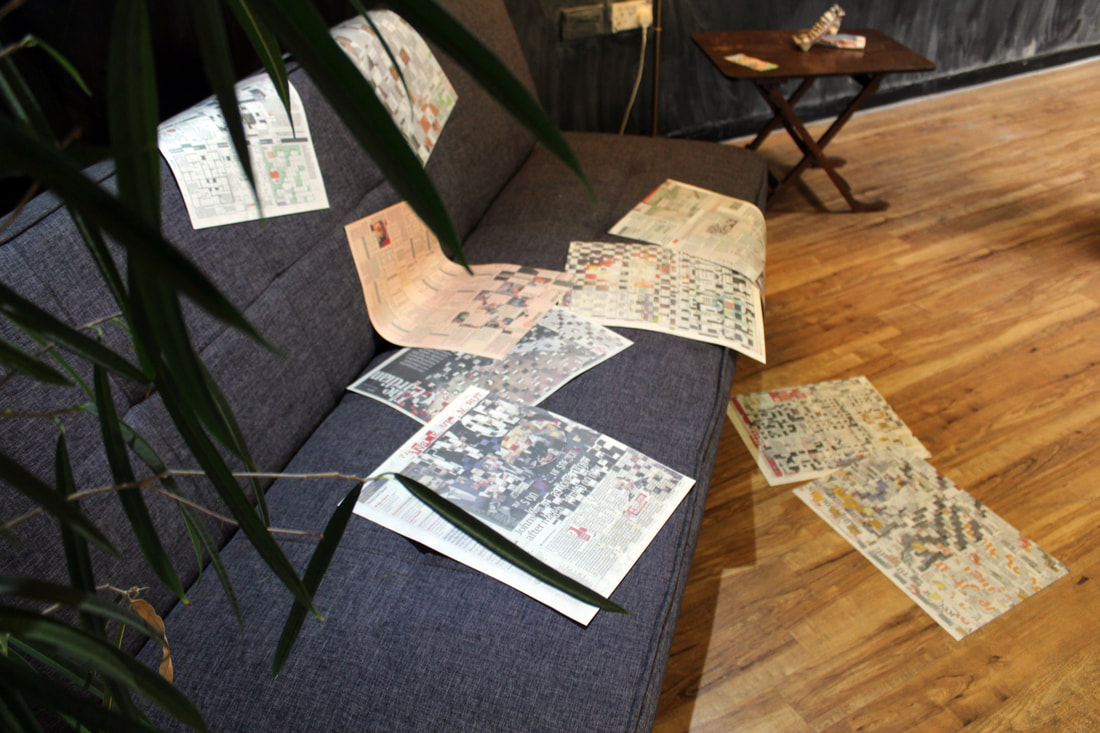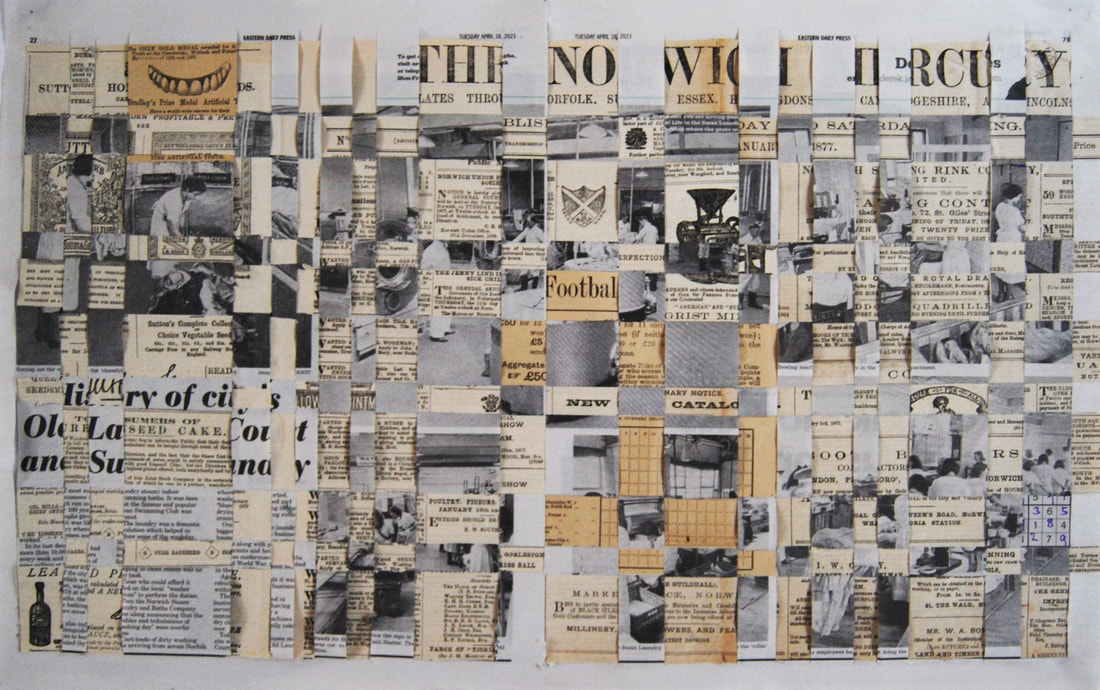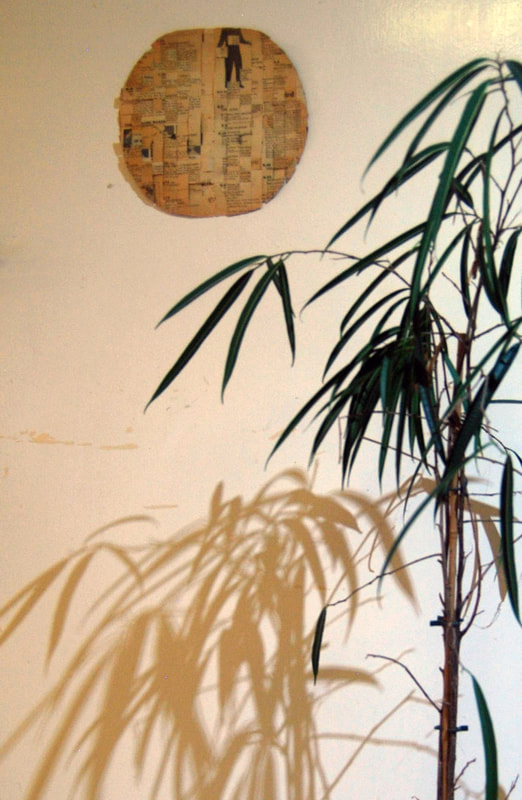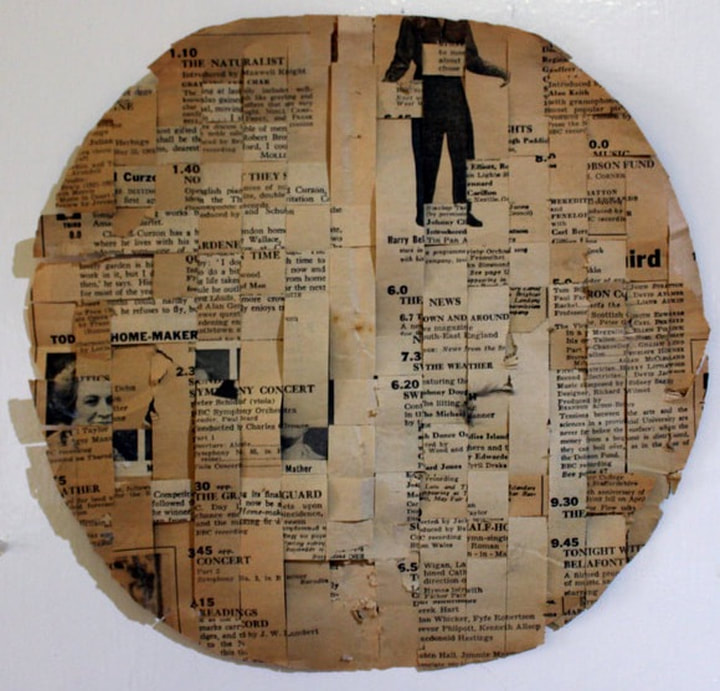Now and Yesterday 2022-23
Installation | Newspapers & varied seats | Metal Culture, Peterborough
Charlie Barlow has weaved temporality by creating textile works with materials of the mass media - everyday newspapers and digital phone notifications. She explores ways in which constant flows of information are presented, experienced and absorbed by the mind. The works range from large double sheet spreads to a hand-held scale; each piece is weaved by hand into patterns as once clear imagery becomes distorted in complex layers. Some headlines have clarity while others are broken and muddled with text messages. The process of weaving mirrors information that is concealed and revealed in the news – a type of censorship, whilst also representing information that is built and lost in the mind – the fallacy of memory. By mixing opposing political stances from tabloids and broadsheets such as The Times, The Guardian and the Sun, emotive stances are positioned with objective facts. This ‘post-truth’ play is also encapsulated by each newspaper piece sharing a section from the games page, for example, crosswords and sudokus – a consistent common aspect of all newspapers across type and time. The newspaper weaves are experienced two-dimensionally and sculpturally across seats, where the news is regularly read, amongst abstracted forms and yarn balls made from leftover newspaper waste. Subtle pinks and dulled greys with tinted inks differentiate newspapers. Some edges are crisp while others fray and strips collapse - a delicate physicality giving shape to the vulnerable texture of daily life.
Installation | Newspapers & varied seats | Metal Culture, Peterborough
Charlie Barlow has weaved temporality by creating textile works with materials of the mass media - everyday newspapers and digital phone notifications. She explores ways in which constant flows of information are presented, experienced and absorbed by the mind. The works range from large double sheet spreads to a hand-held scale; each piece is weaved by hand into patterns as once clear imagery becomes distorted in complex layers. Some headlines have clarity while others are broken and muddled with text messages. The process of weaving mirrors information that is concealed and revealed in the news – a type of censorship, whilst also representing information that is built and lost in the mind – the fallacy of memory. By mixing opposing political stances from tabloids and broadsheets such as The Times, The Guardian and the Sun, emotive stances are positioned with objective facts. This ‘post-truth’ play is also encapsulated by each newspaper piece sharing a section from the games page, for example, crosswords and sudokus – a consistent common aspect of all newspapers across type and time. The newspaper weaves are experienced two-dimensionally and sculpturally across seats, where the news is regularly read, amongst abstracted forms and yarn balls made from leftover newspaper waste. Subtle pinks and dulled greys with tinted inks differentiate newspapers. Some edges are crisp while others fray and strips collapse - a delicate physicality giving shape to the vulnerable texture of daily life.
